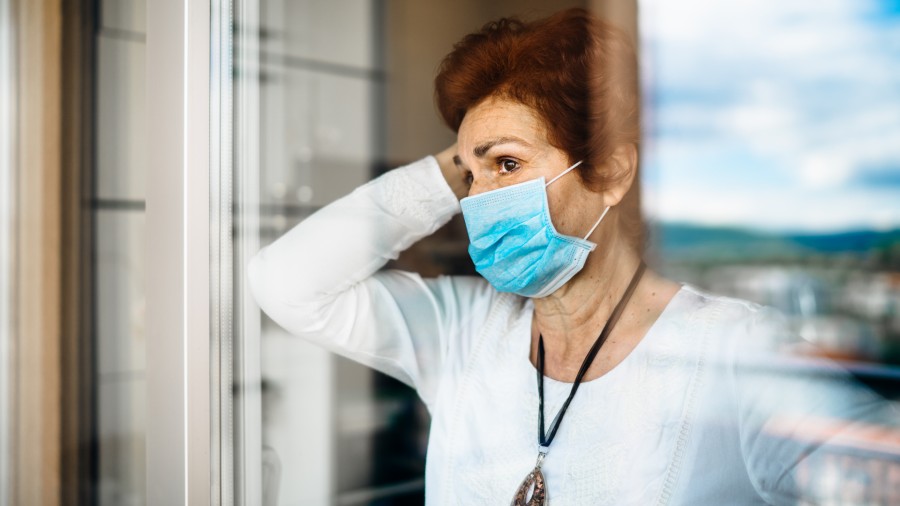I have not been infected by the coronavirus nor have I lost someone to it. Yet, it seems like everything has changed around me… Everyone keeps talking about the ‘new normal’ but I don’t feel normal at all. This uncertainty, fear and loneliness have been poisoning me… I can’t take this anymore.”
When 45-year-old Mrs T came to me with these thoughts, I could neither answer nor reassure her, despite my years of medical training. We physicians too were unprepared for the unprecedented situation courtesy Covid-19. Still, as mental health professionals we are expected to take care of the psychological well-being of people.
The premise
There has been a lot of research and debate on how a global pandemic and its repercussions can affect mental health. The one positive takeaway is that psychological fitness has finally received due importance. Issues of mental health have always been overshadowed by neglect, misinformation and fear of stigma; it took the pandemic to open our eyes to its importance.
Rarely has the world faced a situation where structure, resources and livelihoods have been persistently disrupted, millions of lives lost, economies shattered, loved ones distanced and daily life plunged into chaos and fear. It is natural to “feel on edge” in such a crisis. What is important is to understand what is normal “stress” and when it transits to “distress”, necessitating professional help.
Apart from the rise in mental disorders such as depression, anxiety, post-traumatic stress, sleep problems and grief, social problems too have increased: loneliness due to social distancing, frontline workers and Covid patients being stigmatised and isolated, xenophobia, rise in domestic violence, child and elder abuse, large-scale unemployment, financial insecurity, and altered work and education schedules. These social issues affect us psychologically, hence they are collectively termed “psychosocial”.
For every diagnosed case of depression, there may be hundreds with immense stress who have not yet reached a “threshold” of mental disorder. They suffer in silence until one day they reach the breaking point much like Mrs T. As the World Health Organization (WHO) says, mental health, “is not merely the absence of a mental illness”.
Prevention point
⦿ Encourage mental health patients to seek tele-counselling
⦿ In case of an acute crisis, call professional intervention helplines or seek emergency hospitalisation
⦿ Advise those in emotional distress or uncertainty to stay away from social media and seek help
⦿ Support reporting and prevention of abuse and domestic violence
To live or not to...
Retired bank manager Mr M, 70, told me, “You know what this illness has taken away from me? My desire to live, to see the world again.” He is not the only one. Our research, published in the Indian Journal of Psychiatry and Psychiatry Research, has shown that suicides and attempted suicides are on the rise globally due to financial, social and psychological factors associated with the pandemic, though systematic data is not yet available.
In India — which has no national suicide policy despite it being the most common reason of death in the young — the pandemic’s compounding of suicide risk is a significant concern. According to a study in Lancet, for every Indian death due to suicide, there are 15-20 suicide attempts. The survivors suffer guilt, shame and an increased risk of subsequent attempts.
What elevates the risk of suicide during Covid-19? Poverty, unemployment, abuse and stigma are amplified, fear of infection, guilt of spreading it, panic and uncertainty supplement it. Depression, anxiety and grief can further raise risk. Healthcare workers, the elderly, migrants, the homeless, those with mental and addiction disorders, those living alone and those with suicide attempts or a family history of it are especially vulnerable.
Immunity — how the body fights infection — can be compromised by chronic stress, leading to change in certain chemicals and signalling of the brain. These also contribute to suicidal behaviour, though more research is needed into the mechanism.
The International Association for Suicide Prevention as well as WHO and the US Centers for Disease Control and Prevention have highlighted the need to make suicide prevention an integral part of public health programmes. Suicide is a social problem with individual, familial, environmental and genetic factors. Viewing it as an individual crisis is reductionistic and undermines the immense preventive potential. Most suicides can be avoided if timely action is taken. But that implies awareness and understanding of it at all levels. That is a collective responsibility, which ranges from policy-making to sensitive reporting of suicides by the media to social awareness and individual understanding of red flags.
Raising awareness about mental health is long overdue — the pandemic is just one more reason to do so.
The writer is a psychiatrist at the National Institute of Mental Health and Neurosciences (Nimhans), Bangalore











